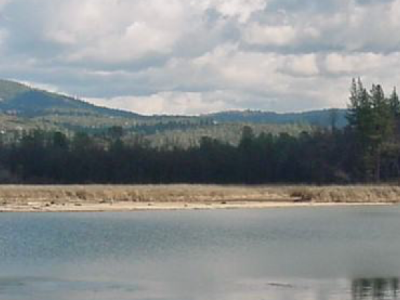
Posted on March 2, 2020
The Tuolumne Utilities District Board of Directors unanimously approved a nearly $537,000 contract at a public meeting Tuesday for construction management on a long-planned restoration of Phoenix Lake Reservoir that’s scheduled to break ground this summer.
Anchor QEA, LLC, an environmental consulting firm with offices throughout the United States, was awarded the contract despite not being the lowest bidder because TUD staff felt they were the most qualified and experienced to manage the complex project.
“They really excelled in all the areas we used as criteria, especially the experience in this type of work,” said Gaddiel DeMattei, an associate engineer with TUD.
The $6.3 million project aims to improve water quality and storage capacity in the often murky-looking holding pond for water that TUD serves to the City of Sonora, East Sonora, Jamestown, Mono Village, and Scenic View.
Unnaturally high rates of soil erosion due to development in the 25-acre watershed that drains into the reservoir has reduced its storage capacity by nearly 30 percent, from 850 to 600 acre-feet of water.
An acre-foot of water is about 326,000 gallons and roughly equivalent to the amount consumed by one to three households on average per year.
The project will dredge sediment from the reservoir to restore about 250 acre-feet of water storage, install a sediment forebay to help slow the rate of build up, and place berms in strategic locations to improve the circulation of water in parts of the lake that are stagnant.
DeMattei said the firm has primarily worked on similar dredging projects in California and dealt with the state’s environmental regulations. He counted 78 requirements on the Phoenix Lake project that they have to make sure the contractor follows.
Some of the requirements DeMattei highlighted include pre-construction biological training for the contractor, surveying in every area of work for bats, frogs, turtles, and other animals, documentation of every tree that needs to removed, and relocating fish downstream.
“This project is quite unique for us from the traditional water and sewer projects we typically manage,” he said.
DeMattei said the goal is to complete the project within one year, but the contract leaves open the possibility for two if needed.
Funding for the project comes largely from state grants totaling $5.1 million in 2014 and 2015, with the district committing an additional $1.2 million to the overall cost through completion. More than $2 million has been spent at this point with the approval of the contract Tuesday.
The district got funding to study and develop a plan for the project in 2011 after a citizens task force spent six years researching options and developing a report.
Ron Ringen, a TUD board member, asked why the Sonora-based Condor Earth Technologies, Inc., did not receive the contract over an outside firm, to which DeMattei responded that their main weakness was their lack of experience in the area.
Ringen also questioned why the plans didn’t include any improvements to recreation and public access, which is restricted mostly to the homes that surround the lake.
“I feel like this is being slowly moved into the garbage pile never to be seen again,” he said, citing early plans on the TUD website that called for a boardwalk and interpretative signage.
District Engineer Erik Johnson said he understands it was previously represented that recreational opportunities would be part of the project, but they were ultimately not included in the funding agreement with the state.
Johnson said the immediate goal is to complete the project at a critical high-fire hazard time, but they could seek funding for recreational opportunities later if the board wants to do that.
“We’re not excluding it or putting that in the garbage can, we just don’t have any way to pay for it right now,” he said. “Let’s get the lake dredged, get the health of the lake restored, get the water quality improved, and then there will be something to look at.”
Barbara Balen, a TUD board member, asked if there was a contingency plan in case the district needs to use the reservoir as an emergency water source while the project is underway.
The district relies solely on a vulnerable wooden flume in the fire-prone Stanislaus River Canyon to move water stored in upstream reservoirs to the rest of the system.
Phoenix Lake would become the district’s main emergency water source if the flume burned and would have enough for about 90 days at the current storage capacity, which will be boosted to about 120 days after the project.
Johnson said the contract requires a certain volume of water to be stored in the reservoir during construction that they could access in case of emergency, but acknowledged they won’t have full storage.
“In the event of, and I hate to think of it, a disaster on the Tuolumne Main Canal when the lake is mostly drained … We’re having conversations about what to do in the event that happens,” he said. “Hopefully that won’t happen, but we’re thinking about it.”
Contact Alex MacLean at amaclean@uniondemocrat.com or (209) 588-4530.
Source: uniondemocrat.com





